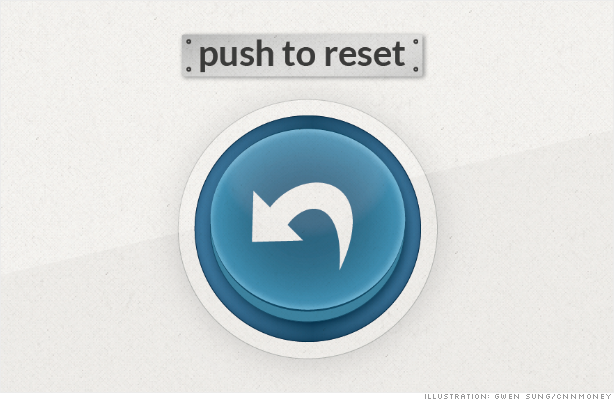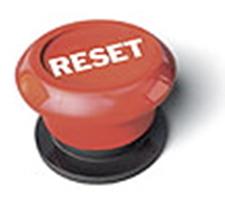 With any new adventure in life, you may find yourself traveling down the wrong path, and possibly getting lost along the way. No worries! It may be time to hit the reset button, and get yourself traveling back down the path to success.
With any new adventure in life, you may find yourself traveling down the wrong path, and possibly getting lost along the way. No worries! It may be time to hit the reset button, and get yourself traveling back down the path to success.
This is the story of a new Bandster named Jill…. Jill AnyBandster.
After careful consideration and planning, the day finally comes when Jill receives her Lap Band. She is of course overjoyed.
Her new journey begins as she starts her recovery diet. After several weeks, Jill has completed the post-op diet phase. She was thrilled to have lost 20 Lbs. during the liquid diet, and has started eating solid food again.
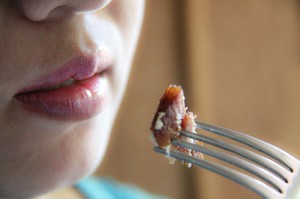 Jill’s Patient Facilitator discussed with her how she will need to learn a new way of eating her food. She was told that she would need to take small bites, chew her food up completely before swallowing, and to space her bites by eating slower. Because Jill has no fill in her band at this time, she realizes that she really does not “feel” like too much has changed, so she continues to chew her food the way she did before having her Lap Band placed.
Jill’s Patient Facilitator discussed with her how she will need to learn a new way of eating her food. She was told that she would need to take small bites, chew her food up completely before swallowing, and to space her bites by eating slower. Because Jill has no fill in her band at this time, she realizes that she really does not “feel” like too much has changed, so she continues to chew her food the way she did before having her Lap Band placed.
Jill is very excited about her band and makes a few adjustments to her diet, and continues to lose weight. A few weeks pass, Jill is down about 30lbs altogether (30% of her goal), the fast weight loss slows to a trickle and then stops.
Jill anxious to get the weight loss going again decides it is time to receive her first fill. So the day finally arrives when she receives her fill. After recovering from the fill, she soon realizes that things are very different than before. Jill, still not having learned that chewing lesson, attempts to eat the way she did before. As a result of not chewing up her food, she experiences her first PB episode (a PB is a “predictive burp” or a nice way of saying vomit) boy did she find that to be unpleasant! “Not sure why that happened”, she thinks to herself. She continues to eat in this manner, and continues to have uncomfortable and unpredictable eating experiences.
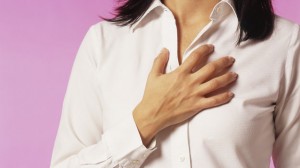 It’s not long before Jill realizes that eating the recommended Bandster type meal (solid protein, followed by a vegetable) is too uncomfortable and takes too much time to eat. She starts to switch to “easy” or “slider foods”. She finds these foods don’t require her to take small well chewed bites, and she can eat them with hardly any discomfort at all.
It’s not long before Jill realizes that eating the recommended Bandster type meal (solid protein, followed by a vegetable) is too uncomfortable and takes too much time to eat. She starts to switch to “easy” or “slider foods”. She finds these foods don’t require her to take small well chewed bites, and she can eat them with hardly any discomfort at all.
Unfortunately for Jill, she is unaware that by choosing “easy slider foods” she is now eating around the band, not allowing it to work as it is designed. These slider types of foods (even healthy ones) move quickly from the smaller upper pouch, and easily slide into the lower stomach, not allowing a long enough time to give the sensation of fullness, that keeps you from over eating.
Jill starts to notice that she is not losing weight like before; in fact she has not had any weight loss for several months. She decides that she should get another fill to start her weight loss going again.
 After receiving another fill, Jill can really “feel” tight restriction. She has to really struggle to get a few bites down when eating.
After receiving another fill, Jill can really “feel” tight restriction. She has to really struggle to get a few bites down when eating.
Having never adapted to her new eating style by chewing up her food, she continues to struggle, and is now having PB episodes more often. Some days, she can’t eat a bite before 2:00 pm, but is starving by evening and then can’t seem to stop wanting to eat. Jill finds herself having to force food to get anything down, but doesn’t seem to be eating that much. She is very frustrated now and can’t understand why she is not losing weight even though she is not eating that much. Jill, thinking that getting an “un-fill” would only slow down her progress further, decides to struggle through the discomfort. Weeks go by with no more weight loss. After weeks of no forward progress and constant struggle, Jills motivation is zapped. She stopped working out, and planning her meals. Most days she forgets to write in her food journal. The joy of having a meal is completely gone. And now she is gaining back weight.
Jill is now convinced that the band is not working!
What Jill doesn’t realize is that by not learning to take smaller well chewed bites, she has been lead onto a path she did not intend to take.
 Does Jill’s story sound familiar to you? Are you walking the same path as Jill? Would you be surprised to find out that this is very common among Banded patients?
Does Jill’s story sound familiar to you? Are you walking the same path as Jill? Would you be surprised to find out that this is very common among Banded patients?
If you are like Jill, you never intended to wander off the path, and now you can’t seem to find your way back. Rest assured that this situation is completely reversible. Many of us have gone down that road, and we can help you to find your way to get back on track.
It’s Time to Hit the Reset Button!
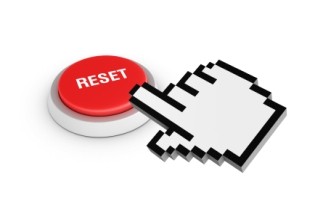 Like Jill, you may be wondering what went wrong. There is a common pattern that seems to lead to this problem.
Like Jill, you may be wondering what went wrong. There is a common pattern that seems to lead to this problem.
Let’s take a look at some of the common symptoms of this problem. Does any of this apply to you?
• Are you thinking you need a fill, but had one not that long ago and have not lost any more weight?
• Are you not eating until late in the day?
• Are you snacking more then eating regular meals?
• Do you have trouble in the mornings, but can eat anything at night?
• Are you eating too much late at night, or 70% of your calories consumed between 3:00 pm and 10:pm?
• Are you skipping some or all of the 10 Lap Band rules?
• Are slider foods becoming a staple?
• Are you suffering from Acid reflux or frequent PB episodes?
• Are you not losing weight?
• Are you frustrated?
• Are you thinking your Lap Band is not working?
If you answered yes to some, most, or all these symptoms, then YES!!!! You need to push the reset button!
The reset button is a process of going back to the beginning of your journey to learn what you needed to learn.
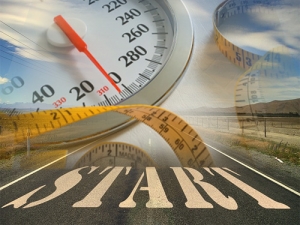 Sometimes the only way to find your way back is to retrace your steps until you find yourself on familiar ground. Let’s talk about what has been going on and see if we can find out where you wandered off the path.
Sometimes the only way to find your way back is to retrace your steps until you find yourself on familiar ground. Let’s talk about what has been going on and see if we can find out where you wandered off the path.
How Did I End up Here?
The problem generally starts soon after you complete the post-op diet and you start eating solid food again. At the time that you complete your post-op diet, your swelling from surgery is gone and your band is un-filled. We give you instructions on how to eat, Your patient Facilitator will go over with you, that you are going to need to take smaller bites and chew up your food completely before attempting to swallow your food from now on.
But the thing is, you were expecting to “Feel” different. At this point it may “feel” like nothing has changed. So you find that you CAN , for the most part, eat the same way you did before the surgery. And you do, except for a few small changes. Your motivation is still in tact and you are working on making better food choices. But, let’s face it, does not feel natural to chew your food for so long. Most of us are used to taking big bites and eating fast. Even though you may be making better choices in your food, you are not practicing your chewing lesson. You get very comfortable with your new Lap Band at this point.
When you start receiving your fills, everything changes. Depending on the amount of your first fill and the size of your band, you may or may not discover that something is very different. Still, eating like you did before the band; you start to experience discomfort while eating. It seems like the food won’t go through. You get a tight “golf ball in the chest” feeling. If you stop eating, this feeling will usually pass.
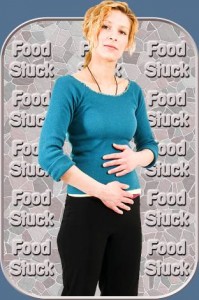 After a while you get used to it hurting when you eat. You figure “this is the way it is”, so you continue to force your food down. Continuing to eat this way, will at the very least cause chronic swelling around the area of the band or, on the extreme side, cause your band to slip. Many patients start to experience acid reflux when this pattern repeats itself over and over again.
After a while you get used to it hurting when you eat. You figure “this is the way it is”, so you continue to force your food down. Continuing to eat this way, will at the very least cause chronic swelling around the area of the band or, on the extreme side, cause your band to slip. Many patients start to experience acid reflux when this pattern repeats itself over and over again.
Slider/Easy Foods
It is not long before you start to gravitate towards foods that are a lot easier and more comfortable to eat. We call this category of foods “slider, slippery, or easy foods” because they slide right through the stoma and are very easy to eat.
Slider/easy foods are usually foods like:
• Soups • Chili • Food with sauces, gravies, oily or higher fat content • Chips •Ice cream •Crunchy foods • Softer foods • Protein drinks
The problem with these foods is even when you select a healthier version of these foods you have a tendency to over eat them.
Let me explain; when you eat only slider/easy foods you are what we refer to as “eating around your band”. In order for the band to be most effective, you need to choose foods that are lower in calorie for their bulk and volume and are nutrient dense. These foods will stay in the upper pouch, created by the band, for a longer period of time. This produces the sensation of fullness or what is referred to as satiation. Satiety determines how long you will go between meals or snacks before you are hungry again. Foods that we recommend that will give you the most satiation are solid animal protein, vegetables, fruits, and whole grains. However, these are the very same foods that you are having trouble eating because you never learned to take small bites and chew up your food.
The slider foods you are eating slip through the stoma and down to the larger lower stomach. The slider foods don’t stay in the upper pouch very long so they don’t create the sensation of fullness. This causes you to eat more, more often or both.
Making a Bad Situation Worse
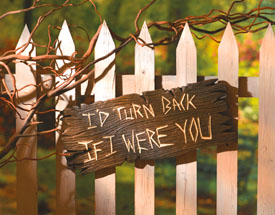 If you have not turned back by this point, you most likely will take another wrong turn. After continuing to eat slider foods to get you by, you will start to notice that you are no longer losing weight. In some cases you start to gain some weight back. You try changing a few things but nothing seems to work. Even exercise seems to only keep you from gaining, but you are still not losing.
If you have not turned back by this point, you most likely will take another wrong turn. After continuing to eat slider foods to get you by, you will start to notice that you are no longer losing weight. In some cases you start to gain some weight back. You try changing a few things but nothing seems to work. Even exercise seems to only keep you from gaining, but you are still not losing.
In the mornings, you can’t eat because you are too tight, so you skip breakfast and pick up a mocha latte on the way to work. The coffee seems to be the only thing that will help you to eat some snacks around the office. (You didn’t eat breakfast right?) So your first real meal comes later in the day, but by now you are starving. For the first time today you feel like you can eat. So now you will most likely eat a larger meal than you should and snack the rest of the night. You go to bed and you wake up tight again and the whole thing starts over again.
Now convinced that you need a fill because you are able to eat such a large slider meal, you schedule a fill appointment. You go through the time and expense of receiving another fill (that you didn’t need) only to find that you are so tight that even the slider foods are not going through. If you are smart you have a un-fill. If you decide to stick with it, this is where really big problems begin.
The Really Big Problems
For those who chose to persevere, it is as though they are on some sort of crusade. They feel a necessity to endure as is. The phrase “No pain, no gain” has taken on a whole new meaning. Acid reflux has become a daily ritual. You will find that even now if you try to chew your food the way you were supposed to in the beginning, you can’t. You still experience some pain or discomfort. Any amount of food is a problem.
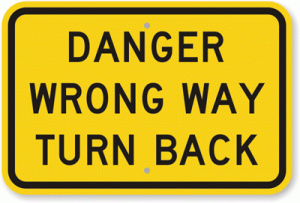 You should consider this a big “DANGER” sign. Having a band that is too tight has no, and I repeat NO ADVANTAGE TO WEIGHT LOSS. A too tight band can lead to a “slip” or erosion problems, and in extreme cases the removal of the band.
You should consider this a big “DANGER” sign. Having a band that is too tight has no, and I repeat NO ADVANTAGE TO WEIGHT LOSS. A too tight band can lead to a “slip” or erosion problems, and in extreme cases the removal of the band.
If you have made it this far, you need to have your band re-evaluated by Dr. Kuri or your health care practitioner. He may need to remove some or all your fill to allow for healing and recovery. He may also suggest over the counter medications if needed and have you go on the recovery diet.
Recovery Diet
The recovery diet is very similar to the post-op diet, but this time you will do a condensed version of only seven days. The recovery diet will help you to wipe the slate clean and correct some of the physical problems you may be experiencing (like acid reflux).
One of the main problems you may be experiencing is swelling around the band area. Excessive swelling can make even liquids hard to pass through. The stomach is a very grumpy organ, and can react violently to forcing food to the point of a chronic swelling. The recovery from swelling is to create a quieter serene environment for the stomach again. If acid reflux has been a problem, please consult DR. Kuri for the OTC product best suited for you (prilosec, nexium, ect.) this will be needed to be taken along with the mini recovery diet. If after seven days on the recovery diet you are still having problems, you should have your band re-evaluated, to see if there is a problem with your band.
Let’s Take a Look at the Recovery Diet
Days 1 – Clear Liquids
Start with a warm/hot beverage first thing in the morning. These warm liquids “prime the pump” if you will, and will help to relax the stoma. You are going to start the first day with clear liquids. A clear liquid is any non-carbonated liquid that you can see through. Warm broths, clear soup, and juices are all good. You can have these clear liquids as often as you need. No need to count calories, this diet is to help you recover, not lose weight. Make sure you are sipping water all day long. Keeping your hydration level up will aid in your recovery and keep your band working at an optimum level.
Day 2 – Full Liquids
On day 2 if you had no trouble with clear liquids, you may move on to full liquids. Full liquids are any non-carbonated liquid you can drink through a straw. Drinkable yogurt, thicker soups, protein shake and the like. Start your day with a warm/hot liquid again and add full liquids as needed throughout the day. Add an additional day if full liquids are difficult to drink. As before continue to drink 64-80 ounces of liquids to keep your hydration level up.
Days 3-6 – Soft/Mushy Foods
By now you should be starting to feel better, and can add soft or mushy foods to your diet. Soft foods are any food that you could eat if you had no teeth. For example cottage cheese, yogurt, soups with soft cooked vegetables, apple sauce, and the like. Again, continue to start your day with a warm/hot liquid and add soft foods throughout the day. If by day three you are still having problems with hot liquids, you may have other issues that need to be addressed.
Day 7 – Back to Solid Food
By day 7 you should be back to square one. Your swelling should be resolved and you should be ready to start back on solid food again. But, before you start back on solids, you need to practice that chewing lesson.
Start with a warm/hot beverage and finish it before you start to eat. Take a look at the end diget of your baby finger. That is the size of bite that you can eat at one time. No bigger! After you have taken your fist bite, be very diligent about chewing and chewing. Just when you think you should be done, chew some more.
To give you an idea of how much you need to chew, imagine an opening no bigger than a number 2 pencil eraser. Now imagine a slow moving drain, and all those food particles start to gather around that tiny opening. If you don’t chew your food very well, you will start to get a back up, (and you know what happens next). It takes on the average between 30 -60 seconds for the food to pass through under normal conditions. So taking your time between bites is important to prevent stacking food and stretching your pouch or esophagus.
Getting Back on Track
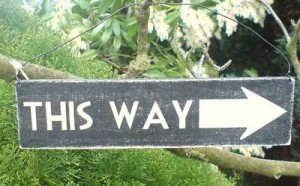 Now you are pointed in the right direction, but you are not home just yet. There are still a few things you need to do to help you get back on track.
Now you are pointed in the right direction, but you are not home just yet. There are still a few things you need to do to help you get back on track.
Let’s Start with Breakfast
Breakfast may have been one meal you found hard to eat. This is partly due to the swelling from improper eating and in part due to the fact that we all tend to be a little tight in the morning. Usually a warm/hot liquid will help open things up to have a small meal. Start with just a few small bites if you feel you are really tight. Give yourself some extra time in the morning to eat slowly, so you don’t feel pressured to eat fast because you are running late for work. You will find in the next few days it will get easier to eat breakfast now that you are no longer swollen and are practicing your chewing.
Don’t Skip Meals
If you skip breakfast, you may find that you lose energy by mid-morning. Rather than skipping breakfast completely, split it in half. Eat a small breakfast early, such as an egg, low-fat yogurt, small serving of oatmeal, or a slice of toasted whole grain bread. Have a small snack on hand such as raisins and 10 or 12 almonds to eat at mid-morning. This split breakfast is a much better solution than reaching for coffee and candy bars to perk yourself up.
Breakfast is a good time to start with fiber in mind. Fiber is an important tool when it comes to weight loss. Fiber will keep you satisfied for longer periods between meals and has many positive benefits to health. Choosing a hot or cold high fiber cereal (5 grams or more per serving) will give you a big boost towards your fiber goal of 25 to 35 grams of fiber daily. The long chain carbohydrate will take a long time to break down and will fuel your body at a time you need it most, at the beginning of your day. Adding milk to cooked cereal will thin it out and help you to eat it more easily. You can also add a 1/2 cup of fruit if you are still hungry or save it later for a snack.
Lunch and Dinner
It is a very American thing to do, to eat the largest meal of the day as the evening meal. In fact, we Americans tend to eat 65% of our daily calories between the hours of 5:00-10:00pm, when we are winding down from our day and using fewer calories.
This can pose a problem for banded patients. If you have not eaten much during the day because you were too tight, now in the later half of the day, when you are more prone to eat too much, you find that you can eat easier and it is easy to over indulge.
If your schedule allows, try shifting the largest meal of the day to the mid day meal. This will allow you to burn those calories when you are more active and help to curb an extra hungry appetite at dinner. Eating a lighter meal in the evening will keep you from having to digest a large meal before bedtime. Lunch and dinner should contain both a protein source and a vegetable. Protein should be lean cuts of beef, chicken, pork tenderloin or fish; 2-4 ounces each at lunch or dinner; followed by soft cooked vegetables (1 to 1 1/2 cups) at both lunch and dinner.
Have your last meal or snack no later than two hours before bedtime, so your pouch will be empty and digestion is well through the process.
Keep Your Meals Simple
It is best to keep your meals simple, less processed the better. Until you are back on track you should limit your trips to restaurants and eating out. You can better control calories and portions when you prepare your own food. And while we are on the subject of restaurants, ALL YOU CAN EAT buffets are a thing of the past. You kissed that life goodbye when you got your band. I am always amazed when I hear a patient say “my band isn’t working. I was at the smorgasbord with my husband and I could eat a whole whatever” Focus on quality of food not quantity.
Use Strategic Snacking to Fill in Nutrition Gaps
Snacking can be good for you, or not, depending on what you eat (and how much). You can keep hunger at bay between meals and get extra nutrition by choosing nutrient-dense foods, or you can nosh on energy-dense foods and pack on the pounds quickly if you’re not careful. Use your fruit, vegetable, milk and grain servings to help hold off hunger between your main meals and fill in gaps in a healthy diet.
Think of your snacks as a mini-meal and keep it balanced. Watch your portions and choose a little protein with healthy fats and high fiber carbs. You’ll feel satisfied without over eating. Choose more fruits, vegetables, whole grains, and fewer sugary, high-fat treats.
Try these ideas:
- Snack time superstars
- Super Snacks With 100 Calories or Less
- Quick and Easy Low-Carb Snacks for Liver Shrinking Diet
What foods should I avoid?
There are certain foods that may cause problems for a banded patient and will slow, stop or can even result in your gaining back lost weight. The following foods should be avoided during the weight loss phase and limited to maintain weight loss:
• Fried/greasy food • Foods high in sugar • Syrups • Cakes • Cookies • Biscuits • Pastries • Sweets • Candy • Chocolate • Honey • Brown/white sugar • Coffee creamer • Jam, marmalade • Pies • Whole milk • Butter/margarine • Full fat cheese • Nuts in large amounts • Alcohol/mixed drinks. These types of foods are very calorie dense, and provide you with little to no nutritional value.
Control Portion Size
Our stomachs really aren’t that big, but because the stomach will stretch, it can hold considerably more food than we need at any given meal. If you are still working on finding that perfect fill level, using good old fashion portion control in the mean time, will help control over eating. When you eat at home, serve your meals already dished up on individual plates rather than family style at the table. You will be less likely to reach for “seconds” that way. At restaurants, ask for “take home” containers. Put the food in the container before you start to eat.
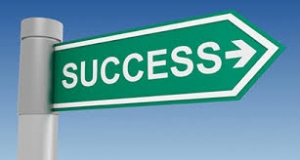 Back to the Basics – The 10 Lap-Band Rules
Back to the Basics – The 10 Lap-Band Rules
It is a good idea to put a copy of the band rules on the refrigerator as a reminder, so you are able to refer to them often. If you encounter a prolonged slow weight loss period, it is helpful to refer back to these basic rules to get back on track.
Continuing on Your Lap-Band Journey
 Rome Wasn’t Built in a Day
Rome Wasn’t Built in a Day
If you can’t transform your unhealthy diet overnight, don’t despair. Most people can’t. Start implementing some of these ideas, even just one at a time. Every change you make will be one step in the right direction. And keep you going on the right path.

